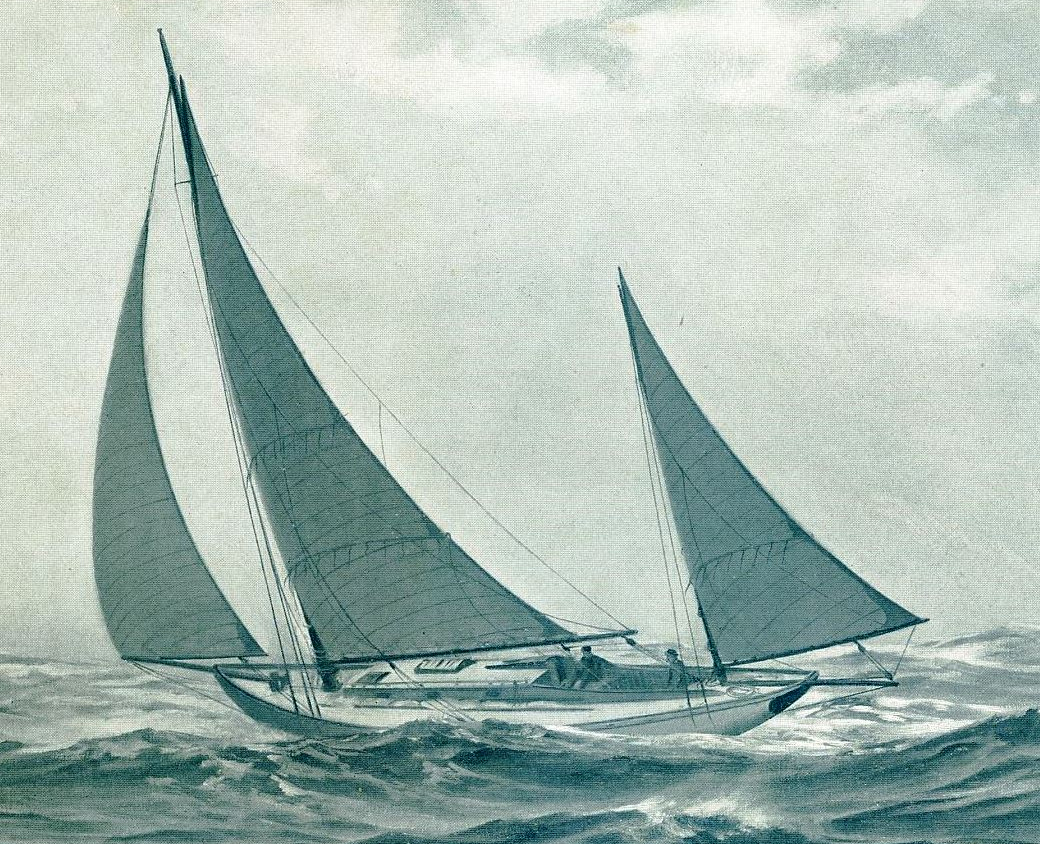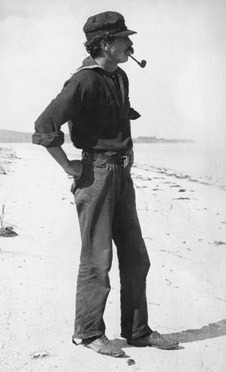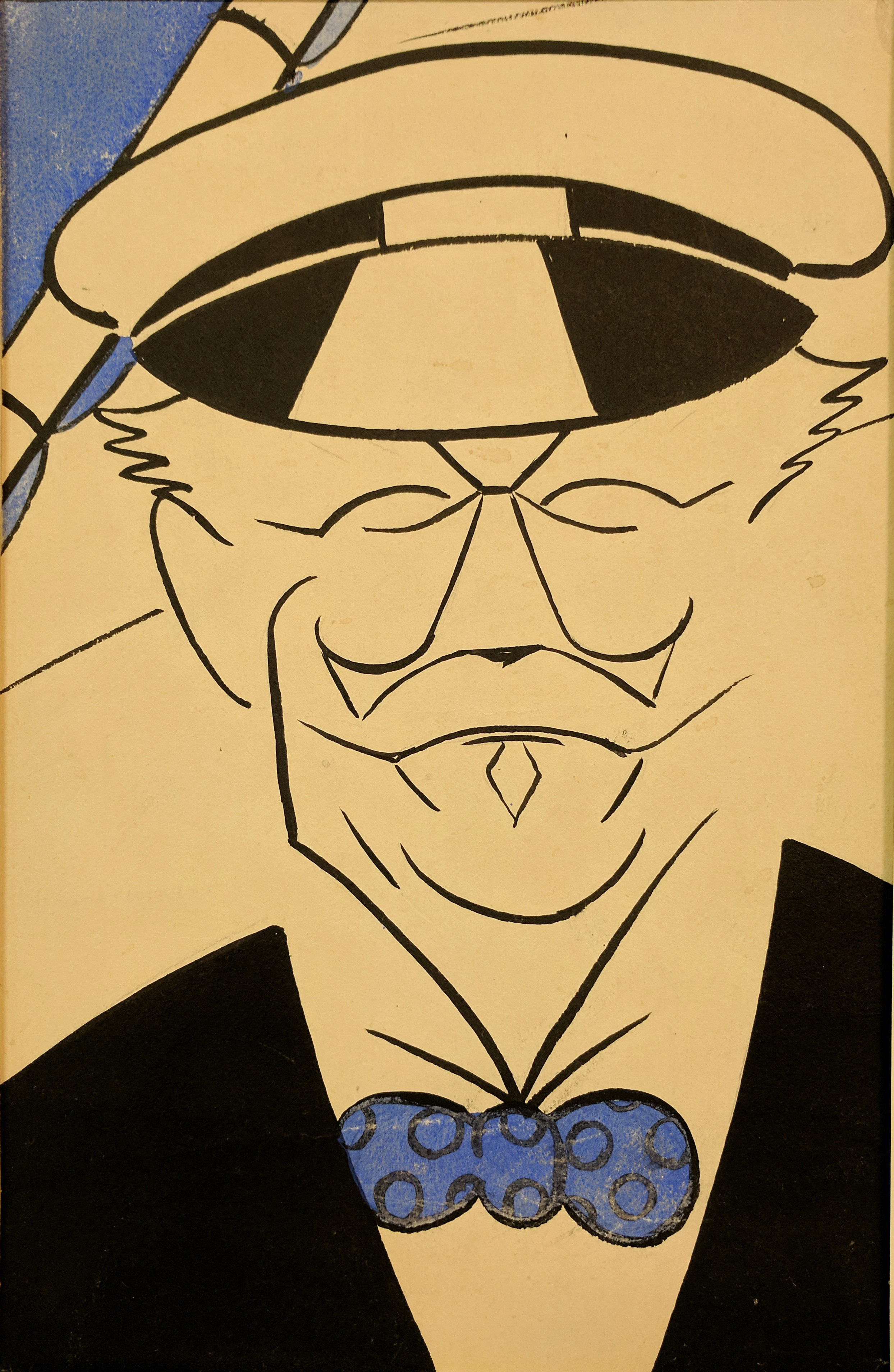I have a new hero—Thomas Fleming Day—the editor of The Rudder magazine in the early 20th century. He was a real character and someone who was certainly not afraid to say exactly what was on his mind! I discovered Mr. Day while researching the history of the Lipton Cup, a beautifully ornate trophy in our collection that was awarded to the winner of the first ocean race to Bermuda in 1906. While there are many, many “Lipton Cups” floating around out there (Sir Thomas Lipton was a zealous advocate of the sport of sailboat racing and provided trophies to many clubs sponsoring racing events) our cup is a little more important because it was presented to the winner of the race that is credited as the founding event of modern ocean racing. Originally called the Ocean Race to Bermuda, it is now known as the Newport-Bermuda Race and it occurs every two years (the next race occurs in June 2018).
The idea for the race originated with Day who believed that ocean racing shouldn’t be limited to large yachts, rich men and professional crews and that amateur sailors in normal boats were equally capable of blue water racing. To convince everyone that ocean racing in small boats was safe he organized a race in 1904 from New York to Marblehead. He proposed the race because he said he was “sick of hearing that we are a lot of shore-skulkers, Central Park sailors; that while we can build racing machines and win with them, we have neither the craft nor the skill and pluck to sail on deep water, or even to go out of sight of land.” He thought ocean racing would make yachting what it was supposed to be “a sport for men—real men.”
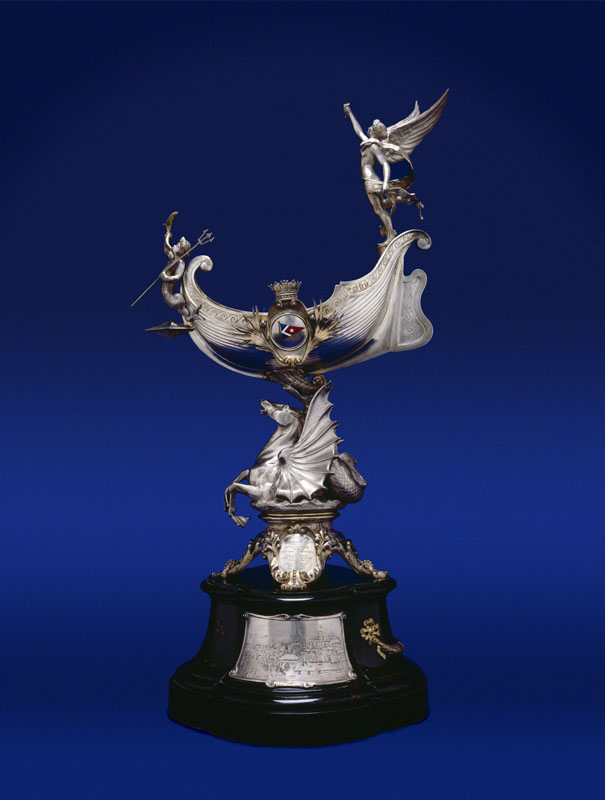
Day faced a lot of opposition to his idea but was not above saying exactly what he thought about it! After the 1904 race he said “it was astonishing and disgusting what a lot of rot was printed in the newspapers about the dangers of this race…Newspaper men ought to know better than to consult a lot of grey-headed, rum-soaked piazza scows about such racing. What do those miserable old hulks, who spend their days swigging booze on the front stoop of a clubhouse, know about the dangers of the deep?”
The sailors who participated enjoyed the race so much that Day and the Brooklyn Yacht Club organized another race in 1905, this time from Gravesend to Hampton Roads. This second race was even more successful and afterwards the sailors told Day they wanted a real ocean race, “one that would take them well off shore and into blue water.” So, for the 1906 race, Day suggested Bermuda as the destination.
Despite two successful races, Day again met with great opposition. Many people, who obviously didn’t know anything about ocean racing, believed that the participants stood no chance of survival. They even went so far as to send memorial wreaths and undertaker’s cards to the participating sailors. One of the biggest sources of consternation was one of the crew members who was, god forbid—a woman! 20-year old Thora Lund Robinson who was the new wife of George Robinson, owner of the smallest boat in the race, the 28’ sloop Gauntlet.
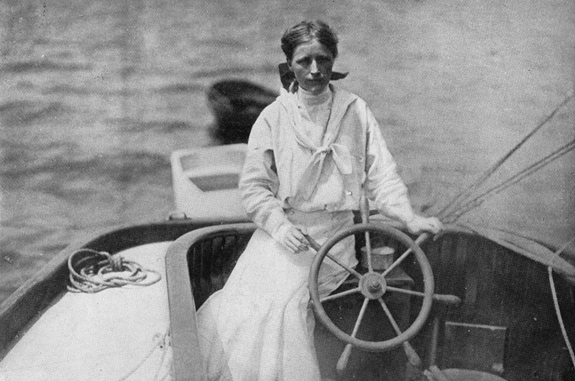
Thora, despite having never gone to sea, stated that she was not about to permit her husband to risk his life alone. The Brooklyn Yacht Club was horrified by the prospect but Day knew that he stood no chance of convincing people ocean racing was safe if he didn’t let Thora participate.
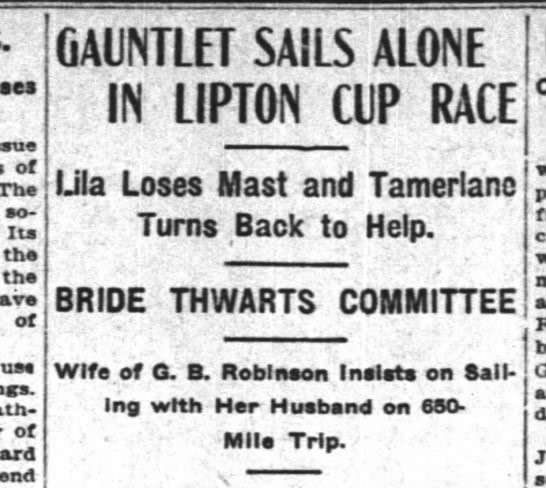
Three boats started the race to Bermuda although interestingly it was one of the larger, the 40’ yawl Lila, that lost her mast within just a few hours of starting the race (something Day predicted as he felt the yawl’s rig was too stiff). Day, who was sailing in the similarly sized yawl Tamerlane turned back to help which left the little Gauntlet racing alone. Tamerlane left New York about 65 hours later and made it to Bermuda five days later—beating the poor little Gauntlet by 25 hours thanks to her battle with terrible weather and feeble navigation. But when Gauntlet reached Bermuda it was with the remarkable Thora at the helm. Afterward, in his usual inimitable style, Day replied “now that we have shown the way and proved that there is no danger and now that a lady has made the voyage there is no excuse for not going.” Since that 1906 over 5,300 boats and more than 60,000 sailors have participated in the Newport-Bermuda Race.
